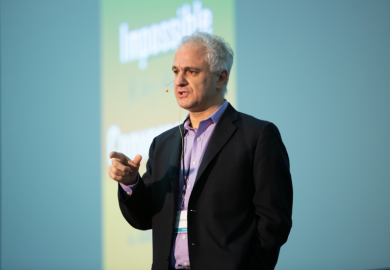A Guide for the Perplexed" is the subtitle of the series these books appear in. However, even if Gary Kemp, Clare Carlisle and Chris Lawn succeed in making it completely clear what the views of Quine, Kierkegaard and Gadamer are, one might still find oneself perplexed by the views themselves.
Of the three, I find Quine's ideas the least troublesome. He was the 20th century's foremost representative of naturalism proposing a revisionary vision for unifying philosophy and science. Kemp intends his opening chapter, "Philosophy as Quine found it", to provide an organising principle. He is right to say that naturalism provides a key to understanding Quine, but this applies to a mature Quine and is not found in this early period. It is anachronistic to make this part of a chapter describing Quine's pre-Second World War views as though it was a theme that led to later positions.
There is another difficulty: Kemp presents "Philosophy as Quine found it" solely in terms of a single theme of logical positivism and Rudolf Carnap in particular. Carnap was a towering figure for Quine, but no mention is made of Quine's reaction to the work of Bertrand Russell and Alfred Tarski.
Quine's interest in questions of ontology and the foundations of mathematics was influenced by Russell's work. Tarski's monumental semantic conception of truth influenced Quine, Popper, Carnap and others. It made the traditional correspondence with reality conception of truth acceptable to analytic and logic-oriented philosophers.
Kemp restricts himself to the analytic-synthetic distinction, and Quine is either famous or infamous for having criticised this distinction. The distinction is between linguistically true sentences whose truth is determined merely by understanding the meaning of the words and sentences that depend on truths about the non-linguistic world. It was deployed to demystify a priori knowledge and necessity. Kemp deals well with this topic in the next two chapters starting with the prewar Truth by Convention (1939), progressing to Quine's most famous paper, Two Dogmas of Empiricism (1951). Remaining chapters deal with other central themes, such as indeterminacy of meaning, naturalised epistemology, and ontological commitment. The writing is clear, but at times symbols are used when ordinary explanations would do. Sadly, Kemp makes no mention of the work of eminent Quine scholars such as Roger Gibson, Dagfinn Follesdal and Gilbert Harmon.
And now for something completely different:where Quinian naturalism explored objectivity, Kierkegaard delved into subjectivity. Instead of truth as some variant of corresponding to reality, Kierkegaard offers "truth is subjectivity". Quine might very well maintain that advocating such a radically different position is not so much denying a doctrine as it is changing the subject. Kierkegaard's concern is with a person authentically making commitments seen from the standpoint of a Christian.
Intellectual recognition of what one ought to do is not enough; one must make a commitment and act accordingly. For Kierkegaard, philosophy is practical.
Carlisle writes clearly and most likely is accurate. However, he has not convinced me of the correctness of Kierkegaard's position. Granted that the quest for authenticity is legitimate, shouldn't it involve being objective and truthful along lines approximating the objective correspondence sense and not in some "existential" leap of faith? It is to Carlisle's credit that he does a fine job in helping readers see why Kierkegaard held his views by providing an interesting biography and arguing that Kierkegaard's philosophy is bound up with his life. Many interesting facts are provided about the academic, philosophical and theological setting in which Kierkegaard developed his most important works.
Gadamer's most important work was Truth and Method. "Truth" here is not correspondence, but is described variously as "experience", "fusion of horizons" and "historical". As for "method", his views are so antithetical to those associated with scientific rationality that fairness requires regarding him as having changed the subject. Gadamer is part of a heritage that distinguishes Naturwissenshaft from Geisteswissneschaft. Lawn tells us that the latter is the study of the nature of human understanding - for example, of philosophy, art and religion.
The method here is hermeneutics and basic to it is interpretation, interpretation having its origin in the interpretation of biblical texts. Lawn traces its role in Schleiermacher, Dilthey and Heidegger up to Gadamer. For Gadamer, interpretation and hermeneutics involve the notion of tradition, but I was left wondering how we determine which or what tradition. Doesn't this seem a matter to be decided by something like objective scientific reasoning? For Gadamer it requires some Platonic-like dialectic within tradition. Descartes is used at several places as the basis for criticising scientific rationality, but this might not strike all readers as a fair sample.
Quine: A Guide for the Perplexed. First Edition
Author - Gary Kemp
Publisher - Continuum
Pages - 179
Price - £14.99
ISBN - 9780826484864
Register to continue
Why register?
- Registration is free and only takes a moment
- Once registered, you can read 3 articles a month
- Sign up for our newsletter
Subscribe
Or subscribe for unlimited access to:
- Unlimited access to news, views, insights & reviews
- Digital editions
- Digital access to THE’s university and college rankings analysis
Already registered or a current subscriber? Login



